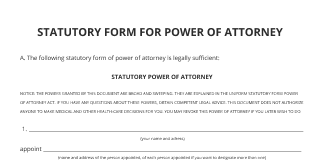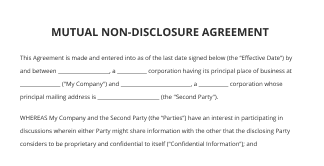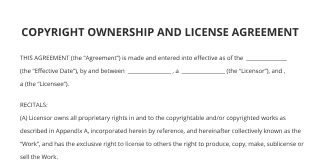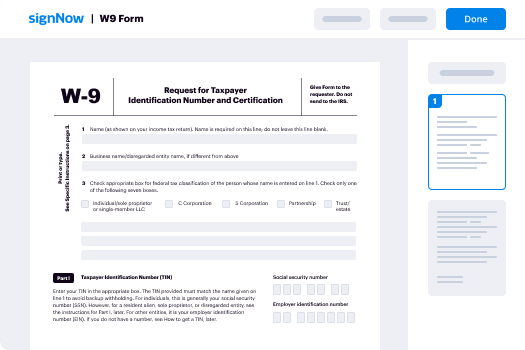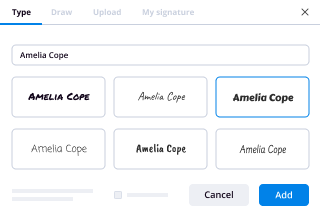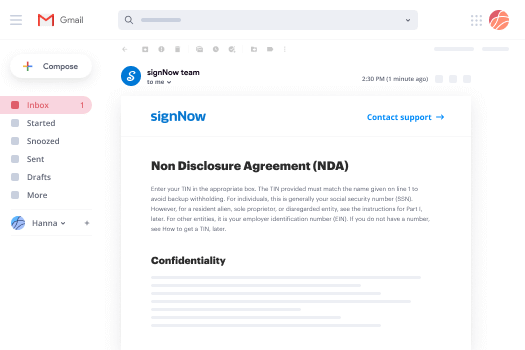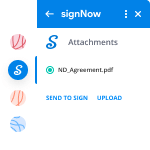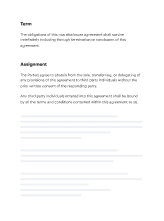Mark Severance Agreement Template Made Easy
Get the powerful eSignature features you need from the solution you trust
Select the pro platform created for professionals
Configure eSignature API quickly
Collaborate better together
Mark severance agreement template, in minutes
Cut the closing time
Maintain important data safe
See airSlate SignNow eSignatures in action
airSlate SignNow solutions for better efficiency
Our user reviews speak for themselves






Why choose airSlate SignNow
-
Free 7-day trial. Choose the plan you need and try it risk-free.
-
Honest pricing for full-featured plans. airSlate SignNow offers subscription plans with no overages or hidden fees at renewal.
-
Enterprise-grade security. airSlate SignNow helps you comply with global security standards.

Your step-by-step guide — mark severance agreement template
Leveraging airSlate SignNow’s electronic signature any company can increase signature workflows and eSign in real-time, supplying a greater experience to clients and employees. Use mark severance agreement template in a few simple actions. Our mobile apps make working on the go feasible, even while off-line! Sign signNows from any place worldwide and close tasks faster.
How to fill out and sign a mark severance agreement template
- Sign in to your airSlate SignNow account.
- Locate your record in your folders or import a new one.
- Open the template adjust using the Tools list.
- Drop fillable fields, add textual content and eSign it.
- Include several signers by emails and set the signing order.
- Choose which recipients can get an executed version.
- Use Advanced Options to limit access to the record and set an expiry date.
- Tap Save and Close when completed.
Additionally, there are more extended features open for mark severance agreement template. Include users to your shared work enviroment, view teams, and keep track of teamwork. Millions of customers across the US and Europe concur that a solution that brings people together in a single cohesive digital location, is exactly what organizations need to keep workflows working easily. The airSlate SignNow REST API enables you to integrate eSignatures into your application, internet site, CRM or cloud storage. Check out airSlate SignNow and get faster, easier and overall more productive eSignature workflows!
How it works
airSlate SignNow features that users love
See exceptional results mark severance agreement template
Get legally-binding signatures now!
FAQs mark severance agreement template
-
How do I write a severance agreement?
Compensation details. Confidentiality rules following termination. Date of employee's termination. Agreement from both parties in the form of a signature. Details about how long the employee will continue to have access to benefits. -
What is the typical severance package?
The severance pay offered is typically one to two weeks for every year worked but can be more. If the job loss will create an economic hardship, discuss this with your (former) employer. The general practice is to try to get four weeks of severance pay for each year worked. -
Can you ask for severance if you resign?
Quitting leaves you with very few options. You'll have no paycheck while you search for a new job. Your employer won't provide severance pay and you will usually be ineligible for unemployment compensation. ... You've decided that leaving your current employer by quitting your job is the answer. -
Can I sue if I signed a severance agreement?
If your severance agreement included a release, you may have given up the right to sue your former employer. Some employers offer severance to employees who lose their jobs. Often, however, employees who want a severance package have to sign a release or waiver, by which they give up their right to sue the company. -
Should you accept severance pay?
Do You Have to Accept a Severance Package? The short answer is no. You don't have to accept what your employer offers, nor do you have to sign a release. A release is valid only if it's voluntary: If your employer requires or coerces you sign, it won't be upheld in court. -
What is a severance letter?
A severance package is pay and benefits employees may be entitled to receive when they leave employment at a company unwillfully. ... In addition to their remaining regular pay, it may include some of the following: Any additional payment based on months of service. -
Can I still sue after signing a severance agreement?
If your severance agreement included a release, you may have given up the right to sue your former employer. Some employers offer severance to employees who lose their jobs. Often, however, employees who want a severance package have to sign a release or waiver, by which they give up their right to sue the company. -
What happens if you don't sign a separation agreement?
Although you don't have to sign a severance agreement, your employer may make it a condition of receiving severance pay. ... However, in most cases, an employer is free to condition severance on the employee signing the agreement. In other words, if the employee refuses to sign, the employee won't get any severance pay. -
What is a confidential separation agreement?
To do this, most companies use an employment separation agreement. ... Employment separation agreements aren't required by law; companies use them to seal confidential company information or to protect themselves from lawsuits. After signing, an employee can't sue employers for wrongful termination or severance pay. -
Can you sign a separation agreement without a lawyer?
The law does not require a person to have a lawyer to create a separation agreement. Some spouses, citing expense, consider creating their own separation agreement without a lawyer. ... Separation agreements can be quite complex, as you might imagine. -
What happens after separation agreement is signed?
Enforcing a Separation Agreement Once you and your spouse have signed the agreement, it becomes a legally binding contract that both of you must abide by. This means that you can sue your spouse or ex-spouse for damages if they bsignNow the agreement and to force compliance with its terms. -
Should I sign a separation and release agreement?
Although you don't have to sign a severance agreement, your employer may make it a condition of receiving severance pay. ... However, in most cases, an employer is free to condition severance on the employee signing the agreement. In other words, if the employee refuses to sign, the employee won't get any severance pay.
What active users are saying — mark severance agreement template
Related searches to mark severance agreement template
Mark severance agreement template
inside America's boardrooms the informational show for board members and corporate secretaries brought to you with knowledge partners villager's PwC Center for audit quality Spencer steward The Conference Board and corporate board members along with content contributors equal our Veridian compensation partners Wilson Sonsini Goodrich Androzani Donnelly financial solutions and the Society for corporate governance welcome to this edition of inside America's boardrooms I'm TK curse that are the CEO of boardroom resources and the co-founder and editor large of corporate board member it's my pleasure to welcome you to the show we're filming here today in the New York studios of The Conference Board and our topic today is how to structure a fair executive severance arrangement and my guest is someone who is versed in this topic and is going to help the audience understand that what to know and welcome Ryan Harvey who's a partner with Meridian compensation Partners welcome Ryan thanks TK we're gonna start very Elementary okay and I think everybody knows the answers to this but we're still gonna ask the question and that is sort of why a severance is part of the package and why it's important to the board yep yep well very often in at least in the press executive confident our executive severance arrangements can be construed as being paid for failure and there's definitely examples out there of severance arrangements which are paid for failure that kind of reinforced that stereotype but I think if they're if they're well constructed they can really support the the needs of shareholders and also can remove a lot of headaches for the board a couple of quick things I would point out that our kind of benefits of having severance of pre-established one of those is it removes the ad hoc negotiation that often goes on when you don't have severance in place so many companies that don't put severance they still they still end up providing severance to executives who terminate but then they have to rely on kind of negotiations at that they allowed and you just don't know what circumstances are gonna be present when you terminate somebody there's very often kind of adverse business conditions there can be emotions that get involved and and very often the company is trying to get the executive to agree to different things like a non-disparagement or non-compete so waiting to the eleventh hour can put you in a weird position I seen many boards where they feel pressured to make decisions that they maybe wouldn't make if they could have designed severance kind of in the light of day before they actually got to a termination so so having that in place I think can be very helpful another thing is it just adds to inconsistency if you don't have pre-established severance so if your ad hoc going out and negotiating on a case-by-case basis you can have very different severance practices between executives over time which is something you want to avoid but probably the biggest thing to mention is just it's a competitive practice over two-thirds of companies in the US now provide executive severance to their senior executives so it's it's starting to become really a standard part of a competitive package particularly if you're trying to recruit an executive externally it could be really the final piece that gets that executive comfortable with making decision to make the move yeah and that history goes way back I mean this is not severance is not anything new it's been part of the process the question is how do you get it right in a non-emotional you know so you know we sort of established that in the end it's a good thing for shareholders Arthur when somebody looks at say-on-pay which this may be a part of what are they what are the like the key design things that people are looking for that sort of make it fair sure there's a couple of different things you want to look at if you're trying to design a really a fair severance arrangement both for executives and for shareholders the key thing when you're designing severance is you want to really provide enough value to bridge that executive to the next employer and at the executive level it could take a year maybe more than a year to find a comparable job at a new employer particularly if you have a non-compete provision that's preventing you from going to a direct competitor so because of that we generally see somewhere between one to one-and-a-half times the annual cash compensation is kind of the standard severance multiple for senior executives and annual compensation is generally includes both base salary and target target annual bonus at the CEO level it's often a little bit higher than that maybe two times is not unusual but again one and a half one to one and a half is it pretty typical and generally enough to bridge them to the next employer you also will generally see the continued continuation of health and welfare benefits for the same period as you're providing severance on the company side committees really need to step back and think about what kind of restrictions they might want to place on the executive post termination pretty universally severance arrangements have a waiver of legal claims but beyond that I would generally recommend companies take a look at at least adding a non-disparagement restriction a non solicitation of employees and a non solicitation of customers and those are those three restrictions are generally enforceable across the US and they just make a lot of sense of and you don't want a disgruntled executive out there on social media disparaging the company you don't want them to be able to poach Talent and you also don't want them to steal customers so those three I think are pretty pretty solid and should really be included in really any severance arrangement the one that you really have to think a little bit more about is the non-compete they are very common so 70 percent of severance arrangements have non-compete clauses although a non-compete is not enforceable in every jurisdiction so you really have to work with legal counsel to think through whether it makes sense or not but if it is enforceable it could be a very useful tool to avoid having an exec you've got and directly compete with you post termination as you mentioned in the air answer the first question the shareholders can sometimes get have the hair of their necks stand up when they see big payouts to CEOs who have really sort of destroyed shareholder value and that's always tough to take on that so what are when we think about a compensation committee from your experience what are the biggest mistakes maybe that a that a compensation committee might make and it's negotiating this severance as part of the package bringing an executive in knowing that if you don't do it at all that's the biggest mistake sure sure there's probably two mistakes that are the biggest or the ones that can get you in the headlines one would be improperly defining the triggers of what's going to trigger severance and the other would be being overly generous with long-term incentive treatment so on the trigger side you know most severance arranged in fact almost all severance arrangements will only trigger severance well the only way you cannot trigger severance is to terminate the executive for cause so and causes is generally very narrowly defined in most executive severance arrangements you essentially have to have you know gross negligence on the part of the executive typically commission of a crime conviction of a felony for example or fraud so it's very narrow and not many companies ever exercise clause because of that but we would really recommend that the companies step back and take a look at that cause definition make sure that it's broad enough you can you can terminate the executive for you know the areas where the committee really believes they should have the ability to terminate without triggering severance so for example you know sexual harassment you should be able to terminate an executive for sexual harassment issues for violation of company's code of conduct or ethical issues so really kind of diving deep there I think is important we do see a minority of companies that go further and and incorporate performance related clauses it's not common and it is a bit of a slippery slope that you have to be careful because you could essentially define almost every involuntary termination as a termination for performance but but I think it is valuable to take a look at that and I think for some committees it might make sense particularly if committee is very reluctant to a severance plan in place because they were worried about maybe providing severance to a poor performer this can provide them with you know some discretion around when they implement it but still have the structure and the consistency of having a severance plan in place the other the other area where we see kind of the headlines very often is on treatment of long-term incentives and you know when you see these big headlines where an executive is walking away with tens of millions of dollars of value what's usually driving that value is not the cash severance it's usually because they were they were very very generous with the equity treatment and the long term incentive treatment and so I would I generally would recommend do not fully vest long term incentives and five and we kind of fully pay out long term incentives at the time of termination those are meant to cover multiple years of service by the executive if you pay them all out at termination it's more than likely gonna be an excessive amount of value so generally some sort of proration is probably the right answer although many companies actually forfeit LTI is not uncommon but I think probably the fairest treatment is some sort of proration based on the the performance that the executive is actually provided with the company and if it is performance based the the fairest treatment is likely to wait until the end of the performance period and actually base the proration on actual performance so you do have to wait a bit if you do that but it is I think it's fair to these executive and fair to the company to do it that way I would imagine that any investigative reporter though even if something spread out as doing their own math and adding up if they can then find that information but I agree with you I think that's a that's a wise plan because if if not you know it's it's nice to keep the headlines a reasonable sure sure for that so well Ryan this is there's some great advice in this I want to thank you for taking the time to join us today and we're really covered quite a specific topic we're just looking at the severance but hopefully over time we'll try and pick apart all the issues that a comp committee has to deal with but this is certainly one and an important one so I want to thank you for taking the time great thanks for having me and that will conclude this edition of inside America's boardrooms we hope you enjoyed the show we'll be back again next week when we take another look at a critical topic that will help you be a better board member or committee member silicium join us again next week for inside America's boardroom brought to you with knowledge partners diligent PwC Center for audit quality Spencer Stewart the conference pool and corporate board members along with content contributors equilon with Ian compensation partners Wilson Sonsini good Rajendra's aunty Donnelly to Metro solutions and the Society for corporate governance [Music]
Show more




